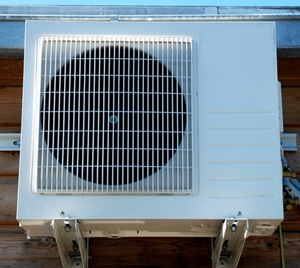Australia is planning to decrease its imports of hydrochlorofluorocarbons (HCFCs) to 2.5 ozone depletion potential (ODP) tonnes by next year, according to a statement from the Department of the Environment.
Sometimes, when HVAC systems malfunction, they can cause HCFCs to enter the air, which is one of the reasons why using refrigerant leak detectors is so important.
This signals a monumental change in the nation’s HVAC industry, whose participants will be encouraged to work with newer machines that use less-harmful refrigerants.
All things considered, this change is for the best. The United Nations (UN) identified HCFCs as one of the leading causes of ozone depletion, setting several legally-binding standards geared toward reducing consumption of these chemicals.
Moving away from R22
Refrigerant 22 (R22), has been in use for decades, but is one of the chief substances responsible for ozone depravation. According to the Montreal Protocol on Substances that Deplete the Ozone Layer, an environmental protection accord developed by the UN, 197 countries have implemented litigation that discourages the production and consumption of this substance.
India formally puts forward its #MontrealProtocol amendment proposal at #OEWG36 pic.twitter.com/zRkoMan9ee
— Bhaskar Deol (@BhaskarDeol) July 21, 2015
A number of alternative substances have been reviewed by participating countries, one of them being R-410A. This particular refrigerant is non-flammable and non-toxic, making it a wiser option in regard to human health.
Yet, R-410A is far from the ideal refrigerant. When measuring greenhouse gas effects, the Department of the Environment noted that just 1 kilogramme of R-410A emissions equates to two tonnes of carbon dioxide.
Are there any natural alternatives?
Finding a refrigerant that’s 100 per cent eco-friendly and just as affordable as R-410A is no easy feat, but that doesn’t mean the Australian government isn’t giving up the search. Still, authorities have accepted that compromises will have to be made.
An assessment conducted by the Australian Institute of Refrigeration, Air Condition and Heating, on behalf of the Department of the Environment, outlined four alternatives HVAC experts are looking into:
- Ammonia: The primary substance for commercial or industrial refrigeration applications. Although the machines capable of using ammonia are much more expensive than fluorocarbon units, some suggest they’re more efficient.
- Carbon dioxide: While it contributes to climate change, carbon dioxide has an OPD of zero, and is already used in vehicle air condition and ice skating rinks. However, equipment will need to be further developed in order to make it a feasible option.
- Hydrocarbon: Often used in large process refrigeration systems, hydrocarbons pose lesser environmental and safety risks in the event leaks occur. However, the flammable nature of the substance is cause for concern.
Despite these options, the HVAC industry shouldn’t ignore its first line of defense: refrigeration gauges that detect issues before they turn into health and environmental hazards.









 Reduce cooking oil costs while ensuring quality
Reduce cooking oil costs while ensuring quality Expert knowledge on CO2 monitoring
Expert knowledge on CO2 monitoring Refrigeration knowledge - in 3 modules
Refrigeration knowledge - in 3 modules



